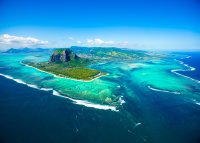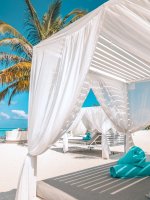The delightful mélange that is Mauritius has its origins in a mixed-up history. It was Dutch … French … and finally British until the country’s independence in 1968.
The first recorded discovery of Mauritius was by Islamic colonisers, when, in ad975, Hasan ibn Ali, a mercurial leader from Shiraz, Iran, left his homeland with a fleet of seven ships and a band of followers.
Most of them eventually settled in Mombasa and Pemba, although one of their ships went as far as the Comoros. From there they reached Madagascar and the islands to the east of it. On 15th-century maps, these were shown as Dina Arobi (Mauritius), Dina Margabim (Réunion) and Dina Moraze (Rodrigues).
It is unlikely that the colonisers actually settled in Dina Arobi. The island was uninhabited then and no evidence of Arab settlements has ever been found. Its neighbour, Madagascar, was inhabited but according to a 12th-century observer, Idrisi, its inhabitants had no boats capable of crossing the sea.
In the wake of Vasco da Gama’s penetration of the Indian Ocean via the Cape of Good Hope, came the Portuguese conquistadores. While they progressed along the African and Indian coasts, they never tried to establish themselves properly in Madagascar and neighbouring islands. Pedro Mascarenhas (after whom the Mascarenes were named) is credited with the European discovery of Réunion in 1512 and Mauritius is said to have been discovered by navigator Domingo Fernandez in about 1511, although there is some doubt that he ever saw the island. No Portuguese settlement was started despite the island’s ideal situation on the route from the Cape to India.
Mauritius became known on Portuguese maps as Ilha do Cirne, Island of the Swan, possibly after the ‘land swan’ which then inhabited the island: the dodo. A more prosaic theory is that the name was derived from that of a Portuguese vessel.
In 1528, Diego Rodriguez gave his name to the island still known as Rodrigues. Portuguese names have also survived on other neighbouring islands including Diego Garcia in the Chagos Archipelago, which was named after another Portuguese navigator.
If the Portuguese did visit Mauritius, it was infrequently. On their way to and from India they preferred to use the Mozambique Channel, staying close to the African coast rather than risking the open sea. Mauritius remained uninhabited except by bats and tropical birds, many of which, like the dodo, are now extinct.
The great bay on the southeast corner of the island, now known as Grand Port, was a natural haven for ships. During the latter part of the 16th century, Swan Island was probably used by pirates who preyed on the pilgrim route between India and Jeddah. Vessels from a Dutch fleet on its way from Amsterdam to Java sailed in during a violent storm in September 1598. Many of the crew were suffering from scurvy and the landfall was seen as a godsend.
Admiral Wybrandt van Warwyck was in command of the fleet and he arrogantly named the bay Warwyck Haven, a name immediately forgotten. His choice of a name for the island, however, had a catchier ring to it – he claimed possession for the Stadtholder of the Netherlands, Prince Mauritius van Nassau.
The Dutch were fascinated by the island, especially by the trusting curiosity of the birds which had yet to learn fear and allowed themselves to be knocked down with a club. In Grant’s History of Mauritius, published in London in 1801, the dodo is described as ‘a feathered tortoise’ whose sluggish movements made it an easy target for the laziest hunter. Although the Dutch called occasionally for shelter, food and fresh water they took little interest in developing the island.
The French and British, too, began to see possibilities for both trade and strategy in the Mascarenes and sent out expeditions in 1638. Their ships arrived too late. In May 1638, Cornelius Simonsz Gooyer had set up the first permanent Dutch settlement in Mauritius. He was sent by the Dutch East India Company and became the first governor, over a population of 25 colonists who planned to exploit the island’s resources of ebony and ambergris, as well as rearing cattle and growing tobacco.
Over the next few years, 100 slaves were imported from Madagascar and convicts sent over from Batavia (now Jakarta). The convicts were Europeans, Indonesians and Indians and were employed in cutting ebony. The free colonists came from Baltic and North Sea ports, hardened men who were settlers out of desperation and coercion rather than through brave ideals. From its very first settlement, Mauritius had a mix of races that was to set a pattern for its future.
The settlers supported themselves by raising vegetables and livestock, which they sold to the company or, for more profit, to the crews of visiting French, English and pirate ships. Yet although the settlement grew to 500, it did not prosper.
The slaves from Madagascar escaped to the forest and began to exact revenge for Dutch cruelties by destroying their crops and slaughtering their cattle. Invasions by hungry rats added to the problems of the settlement. The lack of interest shown by the Dutch East India Company finally demoralised the colonists.
A few years after the Dutch founded a colony at the Cape of Good Hope in 1652, the island was abandoned completely, the European market for ebony being glutted. Only the sugarcane that had been introduced from Batavia and the runaway Malagasy slaves in the forests remained.
The Dutch tried again in 1664, starting a settlement under the aegis of the Cape colony. They were more ambitious this time with attempts at agriculture on a commercial scale, including tobacco, sugarcane, indigo and maize. Deer, introduced from Java, thrived in the forests and were hunted for food and pelts. Forts were built on the eastern coast, forests cleared and domestic animals raised.
Legend has it that the Dutch were driven off for a second time in 1710 by the rats they had themselves accidentally introduced. Resentment at colonial bureaucracy also played its part, since the colony at the Cape received preferential treatment from the Dutch authorities. The settlers were ill-suited to be colonists – they suffered from the heat, were undisciplined, lazy and prone to drunkenness.
Meanwhile, a new state was forming in Madagascar. Called Libertalia, it was a pirate republic founded by a French adventurer and a defrocked Italian monk. There was no shortage of tough men, mostly pirates from every nation, who made Libertalia their home. From there they successfully plundered shipping throughout the Indian Ocean and their community thrived. These men were to contribute to the new colonisation of Mauritius.













